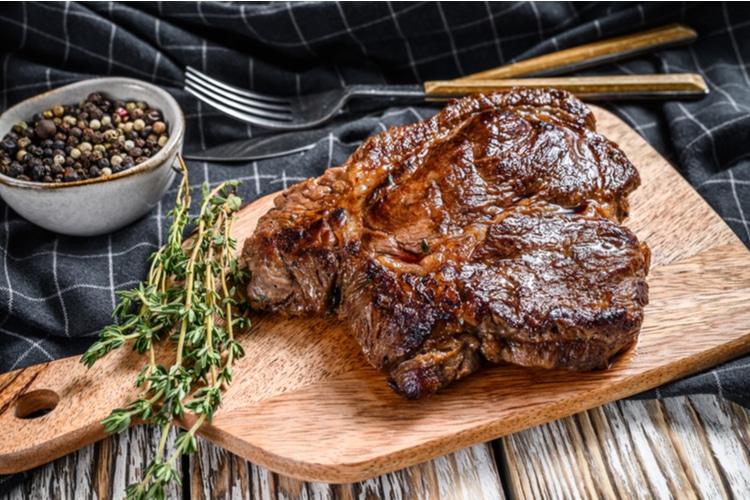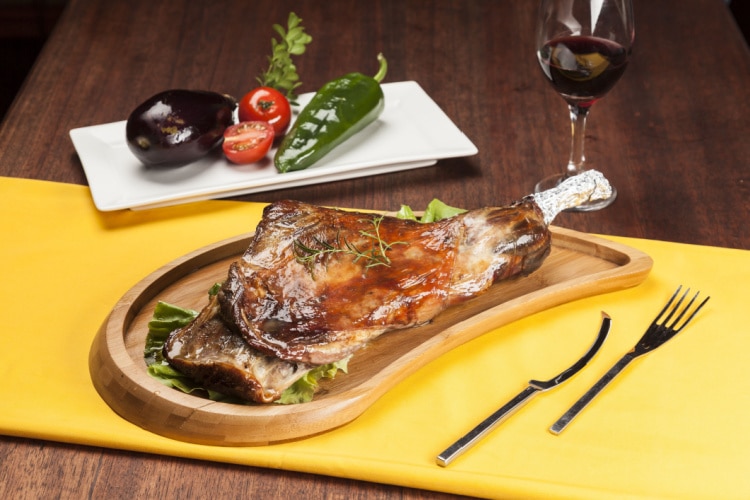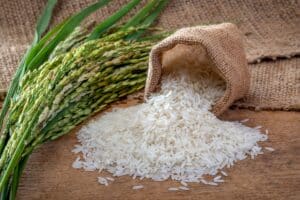If you’ve ever grilled or smoked meat, the first two beef cuts that probably come to mind are arm roast and chuck roast. But with so many distinct beef roast slices, it’s rather easy to get confused by all the choices. Also, some cuts go by several names, which adds to the confusion.
For instance, an arm roast — a cut from the shoulder — is also known as a cold roast or pot roast, whereas a chuck roast — a cut between the shoulder and the neck — is known as a pot roast or chuck roll.
Many people, including you, are curious about what makes one type different from the other. Fortunately, we’re here to explain it, which is good news for all of you meat lovers out there — Let’s get smokin’!
Difference Between Arm Roast vs Chuck Roast
The main difference between arm roast and chuck roast is that they come from different parts of the cow’s shoulder — chuck roast comes from the area above the shoulder, whereas arm roast comes from the middle of the cow’s shoulder.

The shoulder region is a sizable chunk of meat that serves as a primal cut and, as such, is divided into five portions. Three of them — upper blade, shoulder center, and shoulder tender — are perfect for beef roasts or steaks. The other two parts — clod lifter and nose — are classified as accessory meat and are typically utilized for ground meat.

The arm roast originates from the middle of the shoulder. This is a sinew-connected, lean chunk of meat with a round bone. The upper blade of the shoulder is where the chuck roast comes from. The slice is rather tender but with a substantial section of hard, connective tissue running through it.
Here are some other distinctions between these two cuts.
Tenderness
Arm roast is regarded as being a more tender piece of meat. An arm roast with the bone-in gives dishes a richer texture, but boneless pieces are easier to slice.
Chuck roast is rich in connective tissue. As a result, the meat is a little bit harder and has to cook longer.
Fat
Chuck roast is more fatty, whereas arm roast is leaner. As a result, the chuck roast is juicier. When cooked, the fat melts and combines with the meat and remaining ingredients.
However, the chuck roast is also calorically dense, so if you’re searching for something healthy, definitely go with an arm roast.
Flavor
A fattier piece of meat will have a greater taste than a leaner one. Since the chuck roast is considered fattier than the arm roast, it will also be more flavorful.
Nevertheless, arm roast still adds a highly meaty taste to the dishes since it’s cut from the very core of the cow’s shoulder. If you want to take the most out of an arm roast’s flavor, cook it at a low temperature. Slow cooking accentuates the flavor since it leaves more time for the juices to spread.
Cooking
The ideal cooking method for both chuck roast and arm is low and slow with lots of beef stock, veggie stock, or another alternative, along with seasoning and herbs.
Arm roast and chuck roast will get softer as they simmer in the broth for a longer period of time. However, if you don’t want to wind up with a charred beef steak, don’t simmer for too long. For a 3-pound arm roast and chuck roast, roast for around 3 hours.
Arm roast and chuck roast should be cooked to the proper internal temperature. The ideal tool for monitoring the temperature is an infrared thermometer. For tender chuck roast and arm roast, the internal meat heat must be at least 195°F/ 90°C.
Recipe Usage
There’s no right or wrong about how you’ll incorporate these beef cuts into your recipes, but we may give you a couple of suggestions.
All in all, chuck roast and arm roast are both ideal for slower-cooking main dishes, the most popular of which is a traditional beef stew.
There are various ways to braise them, but our favorite is roasting them in red wine, which gives the meat an irresistible crispy coating on the surface and a luscious, soft inside.
A great night supper that you can also make is slow-cooked arm roast or chuck roast with creamy mashed potatoes and gravy sprinkled on top.
If you’re confused about what to do with your leftovers, make a pot pie. Another excellent suggestion is to make a roast beef sandwich with tender pieces of chuck and arm roast.
Price
The price differences between the varieties are probably not going to be very noticeable. Chuck roast is perhaps the less expensive cut of the two. Still, that doesn’t mean that chuck roast is necessarily a cheap piece of meat, only less tender.
Related comparison: Pork loin vs Shoulder
Arm Roast and Chuck Roast Comparison Table
| Category | Arm Roast | Chuck Roast |
|---|---|---|
| Other names | Clod roast or pot roast | Pot roast or chuck roll |
| Type of cut | Between the neck and shoulder | Center part of the shoulder |
| Type of meat | Lean, sinew-connected piece of flesh with a round bone inside | Tender piece of meat with connective tissue running through |
| Fat | Less fatty | Fattier |
| Texture | Leaner | Denser |
| Flavor | Less flavorful | More flavorful |
| Cooking | Slow-cooking on low-temperature | Slow-cooking on low-temperature |
| Cooking time | 3h for 3lb cut | 3h for 3lb cut |
| Internal temperature | 195°F/ 90°C | 195°F/ 90°C |
| Use | Slow-cooker recipes | Slow-cooker recipes |
| Price | More expensive | Less expensive |
Nutritional Content Breakdown: Which One Is Healthier?
Regarding nutrition, arm roast contains fewer calories than chuck roast, so it’s the healthier alternative.
Although chuck roast is richer in saturated fats, calories, and cholesterol, they are both excellent sources of protein, minerals, and vitamins. Overall, if taken sparingly, they can be part of your healthy diet — just limit your consumption of arm roast or chuck roast to three meals per week.
Let’s look at the nutritional chart below and see which nutrients are more prominent in each pork cut.
| Category (4oz) | Arm Roast | Chuck Roast |
|---|---|---|
| Calories | 162 | 219 |
| Carbs | 3g | 0g |
| Fat | 8.1g | 16g |
| Saturated fat | 2.7g | 8g |
| Cholesterol | 54 mg | 71 mg |
| Sodium | 607 mg | 86.7 mg |
| Protein | 18g | 28g |
| Fiber | 0g | 0g |
| Sugars | 0g | 0g |
| Vitamin A | 81 mcg | 1.44 mcg |
| Iron | 1.9 mg | 1.8 mg |
Can I Substitute Arm Roast for Chuck Roast & Vice Versa?
You can swap chuck roast for arm roast. After all, the two are fairly similar to one another and even originate from the same region of the cow.
Having said that, I should point out that arm roast is leaner, and chuck roast is tougher. You might need to add an extra 15 minutes to the cooking time, however, this is not always necessary.
Tips for Buying the Best Arm Roast and Chuck Roast Cut
Both types of beef are quite simple to purchase, but chuck roast is unquestionably the more popular option. If your local supermarket doesn’t stock these cuts, a decent butcher shop will certainly have them.
A butcher shop is a better option than going to your local supermarket. Meat sold at butcher shops is of greater quality and fresher because it’s not pre-sliced and pre-wrapped as in supermarkets.
Freshness is crucial when choosing chuck and arm roast, though. Always pick the freshest meat you can find, and try not to buy the meat more than a few days in advance.
The meat can be frozen to extend its shelf life, but the flavor and texture might not be exactly the same. However, you might be able to reclaim some of the taste with slow cooking. Nevertheless, we believe that fresh food is always superior to frozen.
Conclusion
The question of whether chuck roast or arm roast is superior was either born out of pure munchies or from the sincere desire of meat aficionados. We might never know which one describes you, but we do know that your will to learn more about beef cuts has kept your attention throughout the article.
Congratulations, then! The only thing left to do is pick your preferred choice. If you want a fattier cut, then go with a chuck roast, but if you want something leaner, then an arm roast is the option for you.
That said, you won’t know which beef cut is best until you’ve tried out both arm roast and chuck roast. So pay closer attention when cooking, and you’ll soon be a beef expert!







